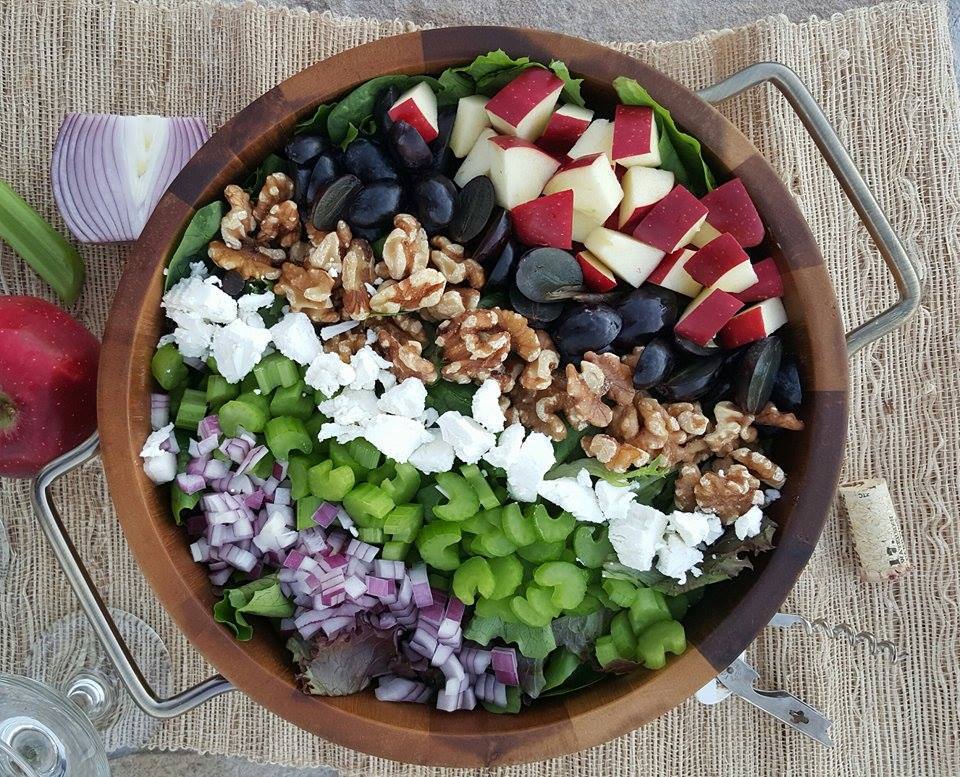

How and Why to Get More Omega-3s Into Your Diet
If you’ve read my other articles about fat, you know that our bodies need fat, so it doesn’t need to be feared the way it has been in the past. However, the type of fat matters, and it should always be eaten in the context of a balanced diet that also includes complex carbs and lean proteins.
Omega-3 fats are arguably the healthiest type of fat to consume, yet most people aren’t getting enough. If you’ve ever wondered what exactly omega-3 fats are and how to get them, keep reading to find out and snag some delicious recipes to get you started.
What are Omega-3 Fats?
Omega-3 fatty acids are a type of polyunsaturated fat. They are considered an essential fat because they cannot be made by your body. This means they must be consumed by your diet and/or supplements.

There are 3 Types of Omega-3 Fats, Which Include:
- Eicosapentaenoic acid (EPA)– this comes from cold-water fatty fish, including salmon, trout, tuna, herring, sardines, and some shellfish like crab and mussels.
- Docosahexaenoic acid (DHA)– considered the most important type by some health professionals, DHA also comes from fatty fish. You can also get it from algae and krill oil, and in smaller amounts from seaweed. Both EPA + DHA are also commonly found in fish oil supplements.
- Alpha-linolenic acid (ALA)-this type of omega-3 fat is unique since it comes from plant sources. Foods that contain ALA include flax, chia, and hemp seeds, walnuts, soybeans, and canola oil. ALA can be converted into EPA and DHA in the body, but it isn’t a very efficient process since only up to 21% gets converted to EPA and only up to 9% converted to DHA, with even less conversion occurring in men than in women. The conversion rate is also affected by age.
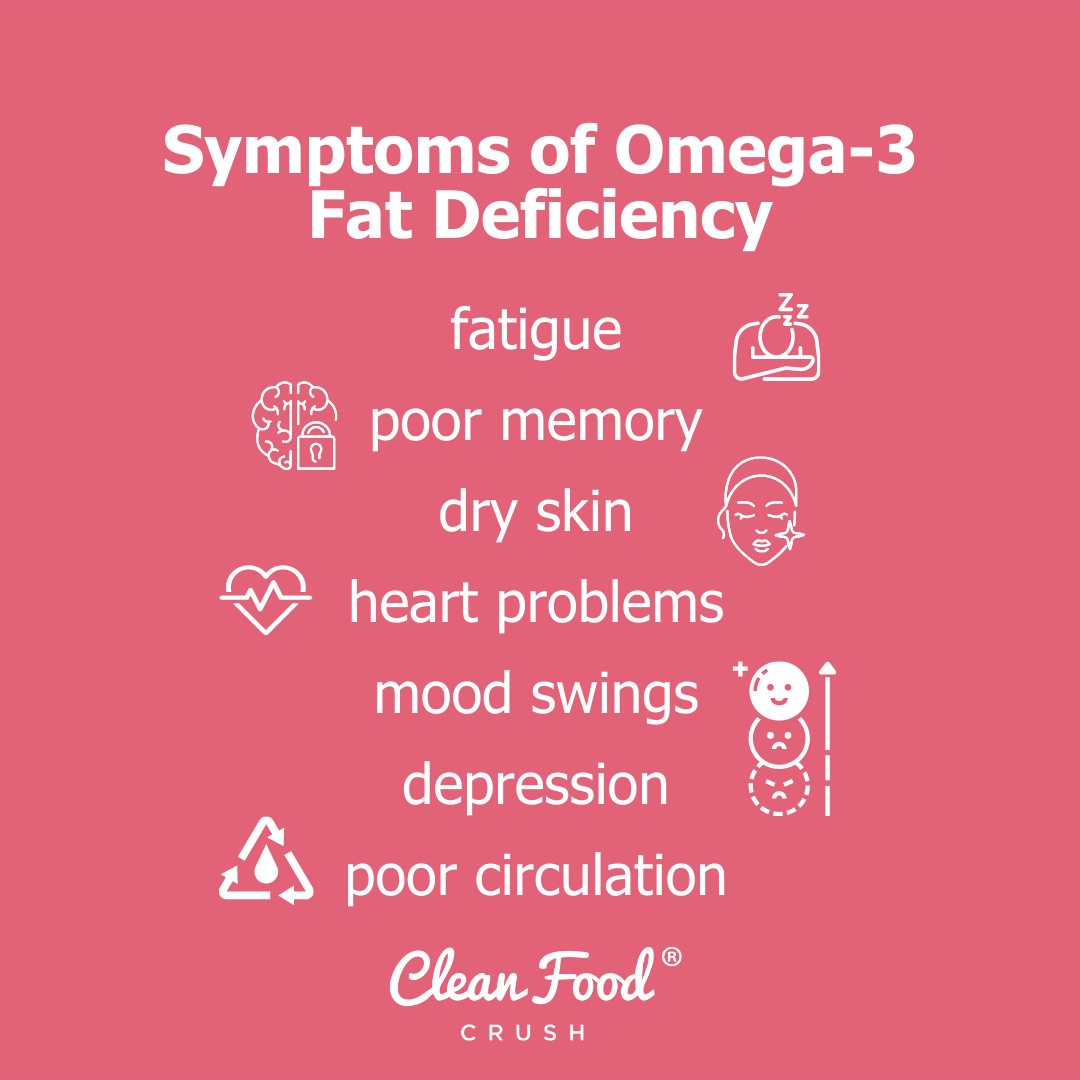
Health Benefits of Omega-3 Fatty Acids
Most people think of the anti-inflammatory properties of omega-3 fats, which is what they are best known for. Since inflammation is the root cause of many diseases and health ailments, omega-3 fats are beneficial for a wide variety of conditions.
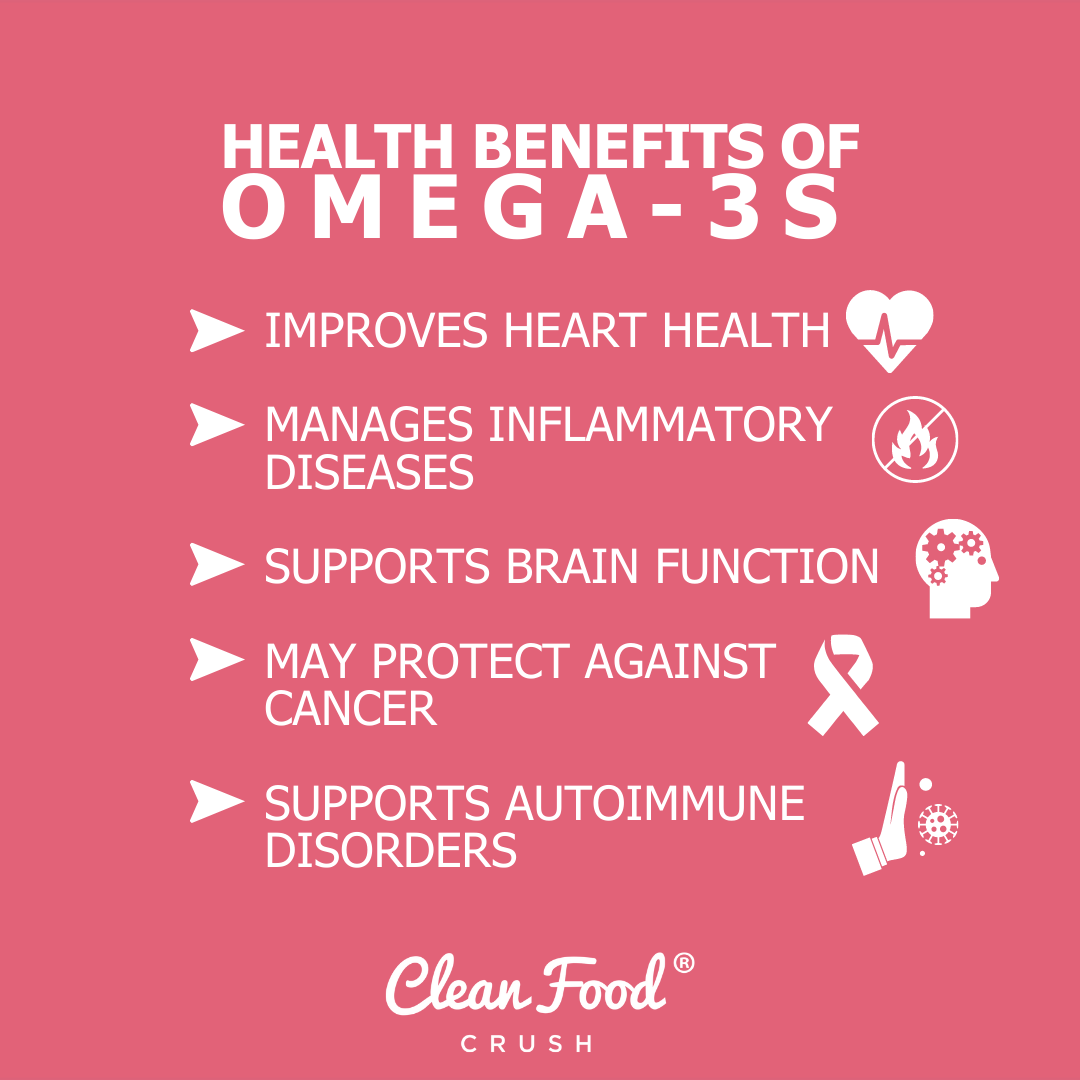
Benefits Include:
- Helps improve heart health. Omega-3 fats can help lower blood pressure and triglyceride levels, and play a role in reducing the risk for heart disease, heart attack, and stroke.
- Manages inflammatory diseases. Omega-3 fats have been shown to help manage and/or reduce the risk of many inflammatory diseases, such as arthritis, allergies, diabetes, obesity, and more.
- Supports brain function and development. Consuming more omega-3s can help prevent and treat cognitive decline, including conditions like Alzheimer’s and dementia, according to some research. DHA also plays a crucial role in brain development of a growing fetus during pregnancy, as well as during early childhood.
- May protect against some types of cancers, like breast and colon cancer. They may also improve the clinical outcomes of patients receiving chemotherapy. However, more studies are needed.
- Supports autoimmune disorders, such as multiple sclerosis and lupus by helping to slow the progression of the disease.
How Much Omega-3 Fats Do You Need?
Unfortunately, there is not yet an official dosage recommendation for total omega-3 fats. ALA is the only type of omega-3 that has an established recommended amount, which is:

- 0.5g/day for infants up to 1 year
- 0.7g/day for children 1-3
- 0.9g/day for children 4-8
- 1.2g/day for boys 9-13
- 1.0g/day for girls 9-13
- 1.6g/day for boys 14-19
- 1.1g/day for girls 14-19
- 1.6g/day for adult men
- 1.4g/day for adult women
- Between 1.3-1.4g/day when pregnant or breastfeeding
As for EPA and DHA, the American Heart Association and the Dietary Guidelines for Americans recommend eating fish at least two times per week (about 8oz total), which would provide an estimated 250-500mg of EPA + DHA. Unfortunately, over 90% of Americans do not consume this amount.
People Who May Especially Benefit From Omega-3s Include:
- People with heart conditions
- Those with cancer
- Those with inflammatory diseases like arthritis, autoimmune conditions, and inflammatory bowel diseases like Chrons and Ulcerative Colitis
- Pregnant and breastfeeding women
- Infants, due to rapid brain development
- The elderly
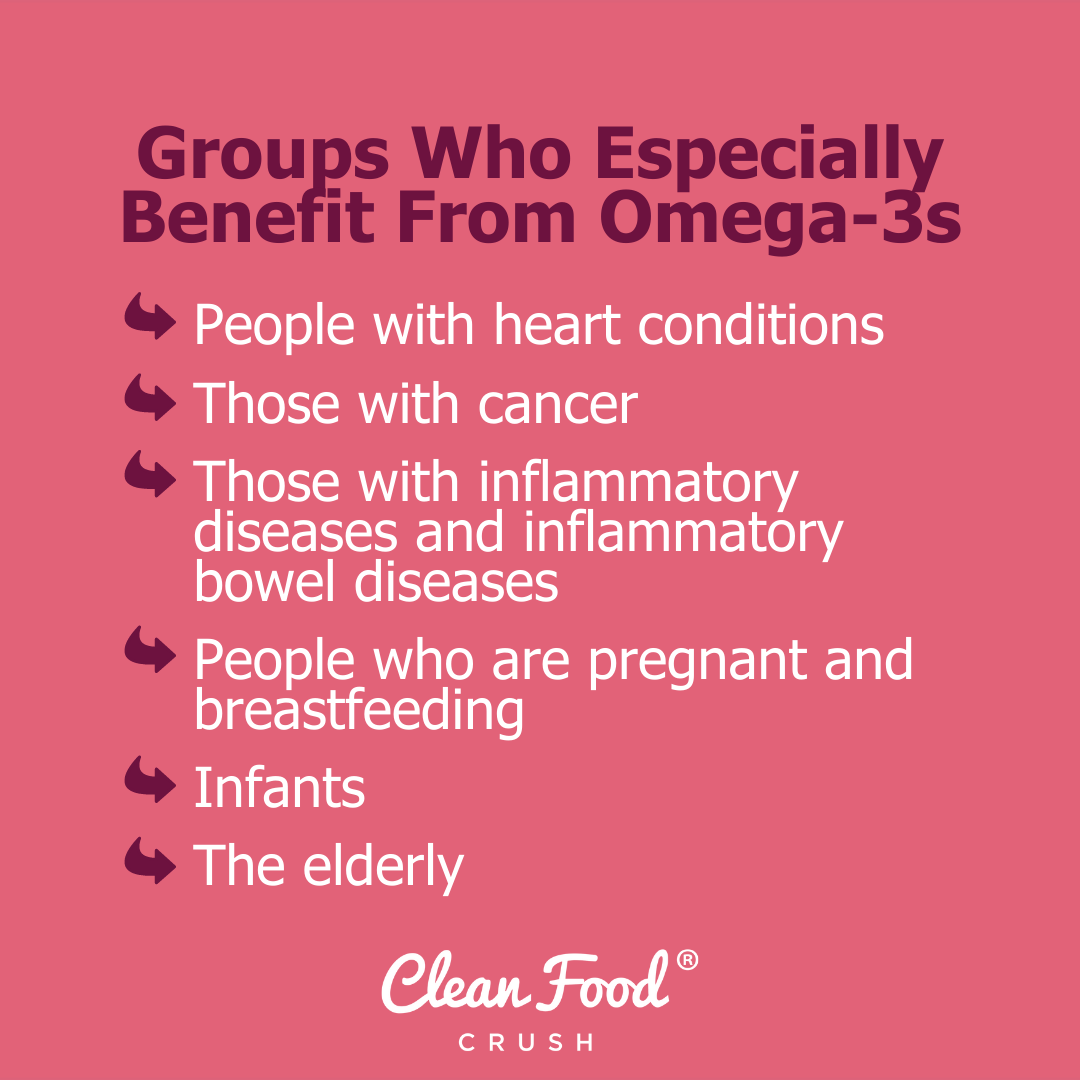
People who eat a lot of omega-6 fats, which are another type of polyunsaturated fat commonly found in vegetable oils that are often used in frying, may also need more omega-3s. That’s because omega-6 fats can promote inflammation when consumed in excess, making the anti-inflammatory properties of omega-3s more necessary. The ideal ratio of omega 6 to 3 is believed to be about 2:1 for best health. However, most people living in North America consume up to 20:1, which is potentially harmful.
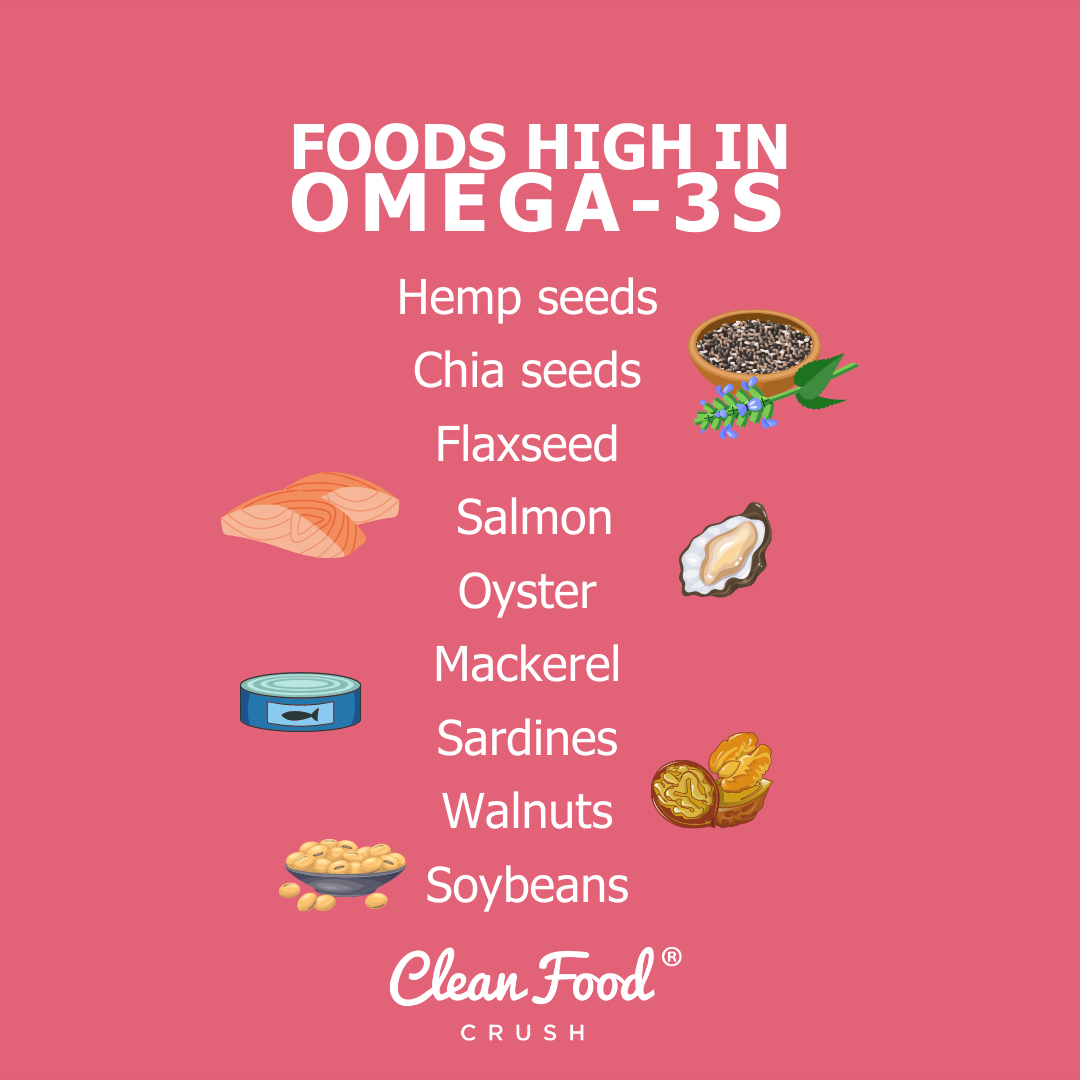
While getting too much omega-3s is not an issue for most people, the FDA recommends that daily intake not be more than 3 g/day of combined EPA and DHA from food and no more than 2 g/day from supplements.
How to Get More Omega-3’s Into Your Diet
Thankfully, getting more of this essential and important fat doesn’t have to be difficult.

Here Are Some Simple Ways To Increase Your Intake:
-
Add hemp or chia seeds to a bowl of yogurt and fruit, or mix into oatmeal-like overnight oats.

-
Add ground flaxseed or chia seeds to a smoothie (or smoothie bowl like this), or sneak it into baked goods or energy balls like these no-bake ones!
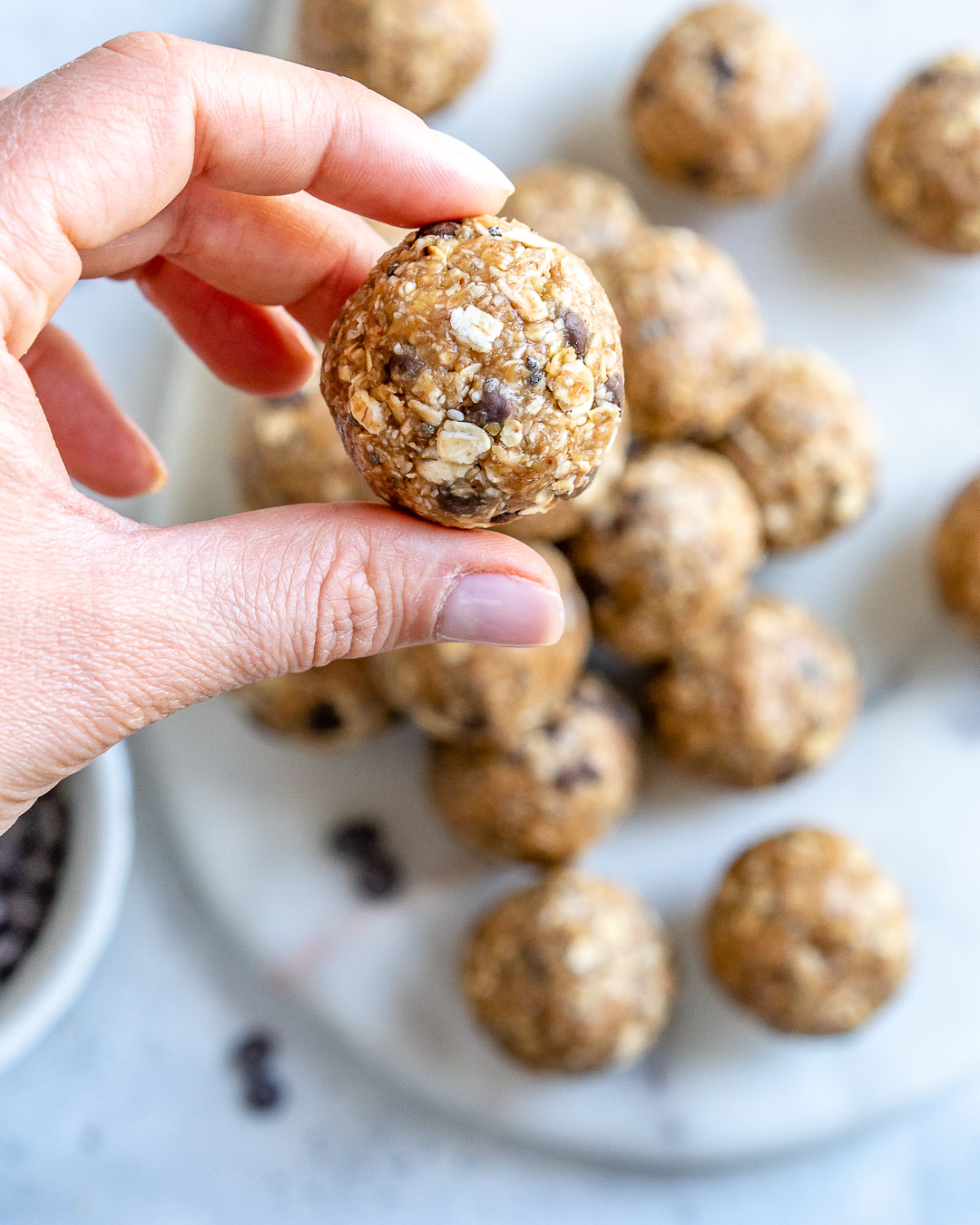
-
Add simple salmon recipes to your weeknight dinner rotation, such as this grilled salmon with avocado salsa, or balsamic sheet pan salmon

-
Enjoy chia seed pudding (like these) or make simple chia seed jam (like this)
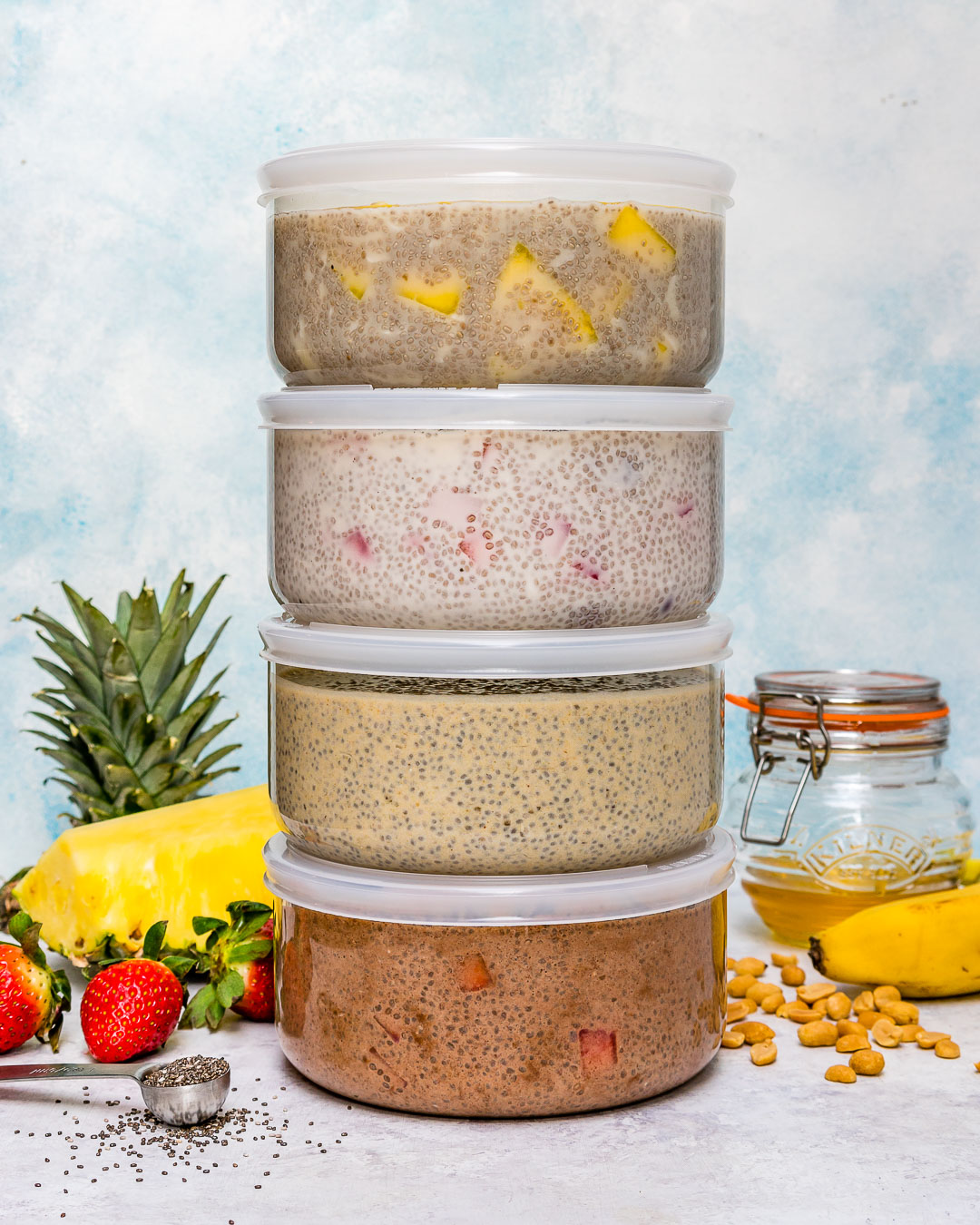
-
Snack on walnuts, pair them with cheese and crackers or sprinkle them on a salad like this one or on oatmeal.
-
Supplement daily with things like fish oil, cod liver oil, algae, or krill oil.
In Summary
Omega-3 fats really are a nutrient you don’t want to miss out on. They have the potential to prevent and help treat numerous conditions and support an overall healthy lifestyle. In addition, the foods that contain omega-3s are delicious and can be incorporated into a wide variety of recipes or simple snacks. Doing what you can to consume more of them will benefit your whole body.









